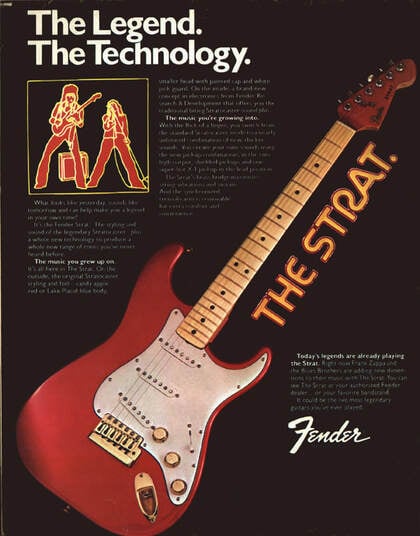New models: The Strat, Hendrix and Rhinestone Stratocaster


|
The Strat was presented at the 1980 NAMM. It was a new model designed by Gregg Wilson, then chief of R&D, with the help of Dan Armstrong. With the Strat, Fender was trying to combine the characteristics that made his guitars famous in the past with few improvements related to modern times. As in the Anniversary Stratocaster, the four bolt neck plate without tilt neck was still present but it featured a hotter pickup at the bridge, called X-1, which later was used on the Standard Stratocaster, associated with a new circuit that made it possible to get as many as nine sounds.
The headstock was another of the Strat’s peculiarities. Fender decided to abandon the CBS' large headstock and to return to a smaller one. However, the new headstock was not as that of Leo’s years and the result was what has been described as an “atrophied” and not very attractive matching headstock, frequently nicknamed Lead II headstock. |

|
© COPYRIGHT 2014-2024 FUZZFACED.NET BY ANTONIO CALVOSA - TUTTI I DIRITTI RISERVATI
La copia, la riproduzione, la pubblicazione e la redistribuzione dei contenuti, se non autorizzate espressamente dall'autore, sono vietate in qualsiasi modo o forma. |

|
© COPYRIGHT 2014-2024 FUZZFACED.NET BY ANTONIO CALVOSA - ALL RIGHTS RESERVED
The copying, reproduction, publication and redistribution of the contents, unless expressly authorized by the author, are prohibited in any way or form. |